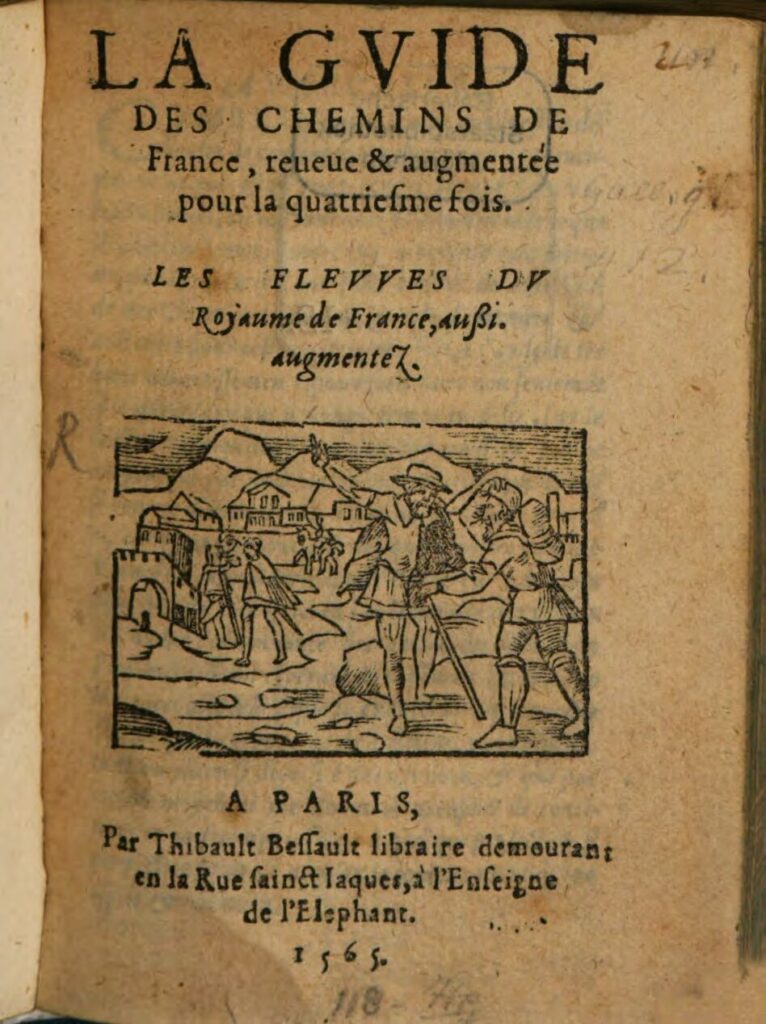Glossary
Travel accounts and guides

Other languages
- Dutch: reisliteratuur, reisbeschrijving, reisjournaal, specific form: wegwijzer
- German: Reisebericht
- French: récit de voyage, relation de voyage, littérature de voyage, carnet de voyage
- Italian: letteratura di viaggio
- Polish: relacje z podróży i przewodniki
- Spanish: literatura de viajes, relato de viaje, specific form: guía de forasteros
Material form
Printed bookSubject
Narrative literature and history, News and current affairsDescription
Descriptive accounts or literary writings by travellers. In general, travel journals are day-to-day reports of a specific journey based on a ship’s log. Travel accounts are retrospective reports in which the author is more present and the content is more ideological. Imaginary travel literature is fictional and not directly based on real journeys.
In the 15th and 16th centuries, writings about pilgrimage sites (e.g. the Holy Sepulchre in Jerusalem or the churches of Rome) not only aided travelling pilgrims but also enabled devotional readers at home to make a spiritual pilgrimage and imagine themselves visiting these places.
In Spain the guía de forasteros (‘foreigners’ guide’) became popular from the eighteenth century onwards. These booklets contained, aside from a calendar and astronomical data, all kinds of practical details such as information about the dates of the local fairs. It shows some resemblance with almanacs, chronicles and travel guides. These booklets are similar to the Dutch wegwyzer, that contained local information about streets, markets, public buildings, post services and transport.
Related terms
travel narrative, travel journal, travel account, travelogue, imaginary travel literature, ars apodemica
Sources
G. Alù and S.P. Hill, ‘The Travelling Eye: Reading the Visual in Travel Narratives’, Studies in Travel Writing 22 (2018), 1–15. URL: https://doi.org/10.1080/13645145.2018.1470073
N. Das et al., (eds.), The Cambridge History of Travel Writing (Cambridge: CUP, 2019).
S. González-Sarasa Hernáez, Tipología editorial del impreso antiguo español, thesis Universidad Complutense de Madrid (2013), 649-653 (‘guía de forasteros’). https://eprints.ucm.es/id/eprint/24020/.
M. van Groesen, ‘A First Popularisation of Travel Literature. On the Methods and Intentions of the De Bry Travel Collection (1590-1634)’, Dutch Crossing. A Journal of Low Countries Studies 25 (2001), 103-131.
D. Gruber, ‘Europeans Encounter the World in Travelogues, 1450–1900’, European History Online (EGO), edited by the Leibniz Institute of European History (IEG), (Mainz 2022), http://www.ieg-ego.eu/gruberd-2022-en
R. Myers and M. Harris, Journeys Through the Market. Travel, Travellers and the Booktrade (New Castle, Del.: Oak Knoll, 1999).
W. Neuber, ‘Der geschlachtete Kannibale: zu einigen niederländischen Ausgaben von Hans Stadens Reisebericht’, in: K.A.E. Enkenkel and W. Neuber (eds.), Cognition and the Book: Typologies of Formal Organisation of Knowledge in the Printed Book of the Early Modern Period (Leiden/Boston: Brill, 2005), 333-367.
G. Verhoeven and P. Verkruijsse, Het journaal van Bontekoe. Bibliografie 1646-1996 (Zutphen: Walburg Pers, 1996).

